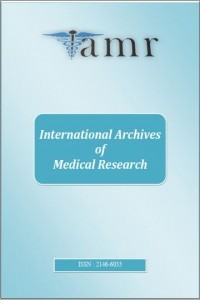Retraction: Evaluation of the effect of insulin resistance on pancreatic exocrine functions in obese patients with fecal elastase-1 levels
Retraction: Evaluation of the effect of insulin resistance on pancreatic exocrine functions in obese patients with fecal elastase-1 levels
___
- 1. Yilmaztepe A, Ulukaya E, Ersoy C, Yilmaz M, Tokullugil HA. Investigation of fecal pancreatic elastase-1 levels in type 2 diabetic patients. The Turkish journal of gastroenterology : the official journal of Turkish Society of Gastroenterology 2005;16:75-80.
- 2. Bytzer P, Talley NJ, Leemon M, Young LJ, Jones MP, Horowitz M. Prevalence of gastrointestinal symptoms associated with diabetes mellitus: a population-based survey of 15,000 adults. Archives of internal medicine 2001;161:1989-96.
- 3. Radlinger B, Ramoser G, Kaser S. Exocrine Pancreatic Insufficiency in Type 1 and Type 2 Diabetes. Current diabetes reports 2020;20:18.
- 4. Tu J, Zhang J, Ke L, et al. Endocrine and exocrine pancreatic insufficiency after acute pancreatitis: long-term follow-up study. BMC gastroenterology 2017;17:114.
- 5. Hardt PD, Brendel MD, Kloer HU, Bretzel RG. Is pancreatic diabetes (type 3c diabetes) underdiagnosed and misdiagnosed? Diabetes care 2008;31 Suppl 2:S165-9.
- 6. Dominici R, Franzini C. Fecal elastase-1 as a test for pancreatic function: a review. Clinical chemistry and laboratory medicine 2002;40:325-32.
- 7. (ADA) TADA. 2. Classification and Diagnosis of Diabetes: Standards of Medical Care in Diabetes-2020. Diabetes care 2020;43:S14-s31.
- 8. Yumuk V, Tsigos C, Fried M, et al. European Guidelines for Obesity Management in Adults. Obesity facts 2015;8:402-24.
- 9. Matthews DR, Hosker JP, Rudenski AS, Naylor BA, Treacher DF, Turner RC. Homeostasis model assessment: insulin resistance and beta-cell function from fasting plasma glucose and insulin concentrations in man. Diabetologia 1985;28:412-9.
- 10. Altay M. Which factors determine exocrine pancreatic dysfunction in diabetes mellitus? World journal of gastroenterology 2019;25:2699-705.
- ISSN: 2146-6033
- Yayın Aralığı: Yılda 2 Sayı
- Başlangıç: 2011
- Yayıncı: Veysi AKPOLAT
Zeynep GÖKER, Rukiye ÇOLAK, Rezzan AYDIN GÖRÜCÜ, Ayşe Nihal ERASLAN, Özge BALCI, Arzu YILMAZ
Clinical and Trichoscopic Characteristics in a Case of Congenital Triangular Alopecia
Ebru ÇELİK, Deniz DUMAN, Cigdem DOGRAMACİ
Intrauterine Testiscular Torsion: A Case Report
Hakan ONUR, Murat Kemal ÇİĞDEM, Müsemma KARABEL
Restoration of Anterior Tooth Fractures Using Silicone Key Method: 3 Case Report
Sema YAZICI AKBIYIK, Dilan AYLUÇTARHAN, Elif Pınar BAKIR, Şeyhmus BAKIR
The Effect of Dimethyl Sulfoxide on Chromosomal Abnormalities in Human Peripheral Blood Lymphocytes
İlyas YÜCEL, Mahir BİNİCİ, Fikriye Fulya KAVAK, Diclehan ORAL, Selahattin TEKEŞ, Mahmut BALKAN
Betül BÖRKÜ UYSAL, Derya ARGUN
Survival Analysis and Causes of Death of Patients with Lupus Nephritis
